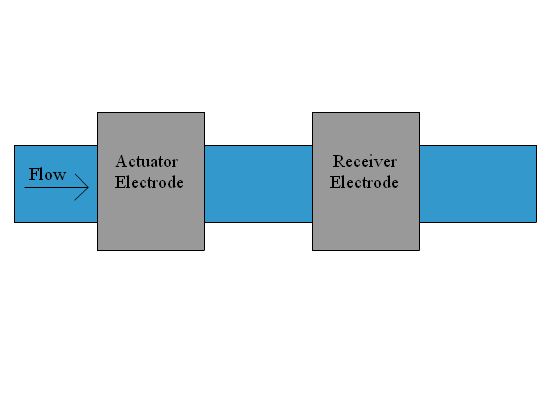
4.5.4 Contactless Conductivity
Contactless conductivity detectors (CCDs) place an actuator electrode and receiver electrode along the capillary tube, as depicted in Figure 4.11. An oscillating frequency is applied at the actuator electrode and detected at the receiver electrode with the liquid inside acting as a resistor. As a sample zone passes, the conductivity changes. Since analytes are charged, the conductivity generally increases--except for when samples have a lower ionic strength than the running buffer.

Figure 4.11 Contactless Conductivity Detector Setup.
Contactless conductivity detectors are universal and work well for inorganic analytes that are difficult to measure by other methods. CCDs function well with low sample volume, which is advantageous for use in CE. Additionally, it generally has a detection limit in the ppm-ppb range for small organic ions.
| Frank's Homepage |
©Dunnivant & Ginsbach, 2008